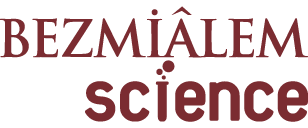ABSTRACT
Objective
The main purpose of this study was to determine the chemical compositions and antimicrobial activity of the essential oil from the aerial parts of the recently discovered endemic species Seseli salsugineum (S. salsugineum) A. Duran and Lyskov for the first time.
Methods
Essential oil from the aerial parts of S. salsugineum was isolated by using a Clevenger-type apparatus and the oil was analyzed by gas chromatography (GC) and GC-mass spectrometry (GC-MS), simultaneously. Furthermore, antimicrobial activity of the essential oil was tested against Gram-negative (Pseudomonas aeruginosa ATCC B888), Gram-positive (Staphylococcus aureus ATCC 6538, Bacillus cereus NRRL B-3711), and three fungal strains: Candida albicans ATCC 24433, Candida parapsilosis ATCC 22019 and Candida krusei ATCC 6258by broth microdilution method. Chloramphenicol and amphotericin B were used as positive controls. Minimum inhibitory concentrations were determined.
Results
Dried aerial parts of S. salsugineum yielded 0.28% (v/w) essential oil. GC and GC-MS analyses resulted in the characterization of sabinene (35.5%), kessane (10.5%), α-pinene (6.4%), terpinen-4-ol (5.0%) as main constituents. The essential oil was found to be effective against all tested strains (320-1280 µg/mL).
Conclusion
To the best of our knowledge, this study is the first report on the chemistry and biological activity of S. salsugineum essential oil.
Introduction
The genus Seseli (Apiaceae) is represented by about 125-140 taxa in the world. It is widespread in Euro-Siberian and Eastern Mediterranean regions including Türkiye (1). The Flora of Türkiye comprises 13 taxa in Türkiye, including 8 endemic species (1-3). Recently a new Seseli species is identified. The newly described species, Seseli salsugineum (S. salsugineum) A. Duran and Lyskov is a narrow endemic species, confined to Lake Tuz area (Konya province) in Central Anatolia, Türkiye. It grows in salt marshes and salt steppes. It is an element of the Irano-Turanian phytogeographic region (4). Morphological features of S. salsugineum is described by some researchers (4-6).
This genus contains essential oil, coumarines, terpenoids and polyacetylenes (7). Essential oils and coumraines are major secondary metabolites of this genus and these may be responsible for their bioactivities (3, 7). Seselinal, sesibiricol, sibirinol, sesibiricin, isosibiricin, osthol, coumurrayin, sesebrin, sesebrinol, sibiricin, imperatorin, bergapten, xanthotoxin, isopimpinellin and mexoticin were isolated from Seseli species (8). Sabinene, α-pinene, β-phellandrene, germacrene D and limonene were identified as major components in essential oils of Seseli sp. (9-11). It is widely used in traditional medicine due to its antibacterial, antifungal (3), insect repellent (3, 12), emmenagogue, anti-bloating (12), anti-inflammatory (3, 13), antinociceptive (13) anti-tumor (3, 13-18), anti-rheumatic (19), and antioxidant (20) activities. It has importance due to the essential oil of the genus Seseli which is used in traditional medicine and has therapeutic properties especially antimicrobial activity (5).
The present study was designed to elucidate the chemical composition and antimicrobial activity of S. salsugineum essential oil.
Methods
Plant Material
Aerial parts of the recently discovered narrow endemic species S. salsugineum A. Duran and Lyskov was collected from near Lake Tuz (Türkiye. C4 Konya: Cihanbeyli, between Gölyazı-Lake Tuz, 9th kilometer, 923 m, salty marshes, 25.09.2011, Duran et al. (4) 9855 (Herbarium: HUB). The essential oil was obtained by water distillation for 3 h from 150 g air-dried material, using a Clevenger-type apparatus.
Gas Chromatography and Gas Chromatography Mass Spectrometry Analyses
Gas chromatography (GC) and GC-mass spectrometry (GC-MS) conditions were described previously (21). Identification of the essential oil components were carried out by comparison of their relative retention times with those of authentic samples or by comparison of their relative retention index to series of n-alkanes. Computer matching against commercial (Wiley GC/MS Library, MassFinder 4.0 Library), and in-house “Başer Library of Essential Oil Constituents” was built up by genuine compounds and components of known oils (22, 23).
Antimicrobial Activity
Bacillus cereus NRRL B-3711 (NRRL-Agricultural Research Service Culture Collection), Staphylococcus aureus ATCC BAA 1026 (ATCC-American Type Culture Collection), Pseudomonas aeruginosa ATCC B888, Candida albicans ATCC 24433, Candida parapsilosis ATCC 22019, Candida krusei ATCC 6258 were used as test microorganisms.
The antimicrobial activity of the essential oil was evaluated by broth microdilution assay according to a modified Clinical and Laboratory Standards Institute method (25). Since this study was an in vitro study, ethics committee approval was not required. Mueller Hinton Agar (MHA), Mueller Hinton Broth (MHB) for bacteria, Potato Dextrose Agar (PDA) and Roswell Park Memorial Institute (RPMI) 1640 for fungi were provided and prepared by diluting with distilled water appropriately. Laboratory materials, mediums and contaminated materials used in antimicrobial activity experiments were sterilized in an autoclave at 121 °C under 1.5 atm pressure for 20 minutes. Bacteria were used as MHA medium and PDA medium for Candida strains. The prepared media were stored at +4 °C for a maximum of 2 weeks. Their purity was checked, and the microorganisms stored in 15% glycerol solution at -85 °C were inoculated into the prepared media and allowed to multiply by incubating in a bacteriological oven at 37 °C for 24 hours. Turbidity adjustment was made using a turbidimeter according to the developing cultures McFarland No: 0.5 (approximately 108 CFU/mL for bacteria) tube (24).
The essential oil (20-0.019 mg/mL) was dissolved in sterile dimethyl sulfoxide for the initial stock solution. One hundred µL of essential oil was applied to 96-well microplates and 2 fold serial dilutions were performed. After the dilutions, 50 µL aliquots of turbidimetrically adjusted microorganisms were inoculated on to the plates. After incubation in MHB and RPMI mediums at 37 °C for 24 h, the first well was treated with 20 µL of resazurin, which insured on all microplates the minimum inhibitory concentrations (MIC) where the lowest concentration of the samples prevented visible growth. Solvent and microbial controls were also added to the assay plate. Antimicrobial assays were repeated at least three times for all the test samples. MIC of the samples were determined and compared with both positive controls. The reference drugs, chloramphenicol (for bacteria) and amphotericin B (for fungus) (Sigma-Aldrich) were used as positive controls (24).
Results
The yield of essential oil was obtained by hydrodistillation from the aerial parts of S. salsugineum was 0.28% (v/w). It was analysed by GC and GC-MS, simultaneously. A total of 42 compounds were identified in the essential oil of S. salsugineum, which represented 93.7% of the oil. Sabinene (35.5%), kessane (10.5%), α-pinene (6.4%) and terpinen-4-ol (5.0%) were characterized as main constituents. Other components are given in Table 1.
Antimicrobial activity of the essential oil (40-2560 µg/mL) compared to reference antibiotics (2-64 µg/mL), was tested against the following bacterial strains: Gram-negative (Pseudomonas aeruginosa ATCC B888), Gram-positive (Staphylococcus aureus ATCC 6538, Bacillus cereus NRRL B-3711), and three fungal strains: Candida albicans ATCC 24433, Candida parapsilosis ATCC 22019 and Candida krusei ATCC 6258; results are presented in Table 2.
The essential oil generally showed the best action (320 µg/mL) against the tested microorganisms except for P. aeruginosa strain (1280 µg/mL).
Discussion
In previous works on the other species of Seseli, the most abundant compound in the essential oil S. rigidum fruit oil was found as monoterpenes α-pinene (37.8%) and sabinene (13.5%) (25). Goncalves et al. (26) reported that α-pinene (24.8-24.9%), β-pinene (23.5-23.9%) and (Z)-β-ocimene (13.3-16.0%) were major constituents in the essential oils of S. tortuosum. The main constituents of the oils of S. montanum subsp. peixotoanum were α-pinene (36.0-37.1%), β-pinene (22.5-23.6%) and limonene (7.7-8.8%). (Z)-β-Ocimene was a minor component in S. montanum subsp. peixotoanum oils. Among the sesquiterpenes, β-elemene was the major one (5.2-5.8%) (26). In another study, the essential oils obtained from the different parts of S. rigidum (flower, leaf and fruit) were analysed and α-pinene (33.0, 26.3, 33.2%), sabinene (7.9, 7.8, 18.5%) and limonene (7.1, 5.4, 8.7%) were found as major components (27). According to the Tosun et al. (28) the main constituents were determined as germacrene D (54.1%) and sabinene (22.4%) in S. gummiferum and S. corymbosum subsp. Corymbosum, and β-phellandrene (29.2%), α-phellandrene (8.2%) and germacrene D (2.5%) in S. corymbosum subsp. corymbosum essential oil.
According to a previous study, evaluation of MIC of the oils showed variability of inhibition among all the fungi tested, Candida albicans ATCC 10231, C. tropicalis ATCC 13803, and C. parapsilosis ATCC 90018. S. rigidum oil proved to be more active with MIC and MLC values ranging from 0.64 to 1.25 µL/mL (27). In another work, the antimicrobial activity of essential oils from S. rigidum (root, leaf, flower and fruit) were tested against Escherichia coli ATCC 25922, Pseudomonas aeruginosa ATCC 27853, Staphylococcus aureus ATCC 6538, Bacillus cereus ATCC 10876, Candida albicans ATCC 16404 and Aspergillus niger ATCC 10231. MIC values were found ranging from 0.02 to 3.24 mg/mL (26).
Conclusion
The Seseli salsugineum sp. was discovered and published by Duran et al.'s study in 2021. The essential oil was obtained and its antimicrobial activity was demonstrated. Compared with the literature, to the best of our knowledge, this is the first report on the chemical constituents and antimicrobial activities of the S. salsugineum essential oil.



